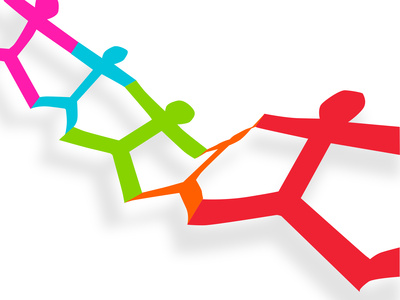
There are three key outreach and education principles that should apply to your community development efforts. Focusing on these principles will make any community development program more successful.
If you read this blog on a regular basis, you know that one of the things we preach is making your community development plan inclusive.
You should involve many segments of the community in your planning and implementation efforts. Too often, community development organizations only skim the surface, enlisting established leaders almost exclusively. This is understandable, but it’s also shortsighted.
In community development, the 80/20 rule (80 percent of the work is done by 20 percent of the people) often applies. But if you involve more people, your results can improve significantly. In the process, you’ll take some of the load off that 20 percent.
In small communities, this approach might involve looking at the population as a whole. In larger communities, it means including representatives of the groups that you’ve defined as stakeholders.
Here’s where the three key principles come into play.
They are:
- Reach them
- Teach them
- Engage them
Let’s briefly examine each of these principles.
Reach them: Hopefully, your community development plan clearly identifies the targets of your efforts.
There obviously are certain types of businesses you hope to recruit, and you’re building programs to reach those businesses. But what about the people who already live in your community?
Are there sustained efforts to reach them?
Are your community development efforts inclusive?
Are you keeping people informed about your development plans and activities?
If not, your efforts will never be as successful as they could be. The next time you go to the people for a tax to support development efforts, you may find them less than receptive. I’ve worked extensively on community tax initiatives.
Too often, this is what I see:
A great deal of effort is invested in reaching people during the weeks leading up to a vote with very little effort to communicate with them between elections.
Teach them: You’ve probably spent a great deal of time trying to ensure that the members of your development team are on the same page.
You teach them everything from the fundamentals of how a strategic plan is developed to how it’s executed. You may have even brought in consultants to help teach your team the tricks of the trade.
Again, though, what about the vast majority of people who live in your community?
It’s important that you reach out to them and continually teach them. Tell them what the plan is, how it’s going and how they can get involved.
Engage them: The more representation you have in planning and executing your program, the more successful it will be.
Unless you really believe that you can single-handedly pull the community up by its bootstraps, you know that it’s a must to have as broad a base of support and participation as possible.
If people aren’t engaged, you probably aren’t going to be successful.
Find ways for them to volunteer their time. Ask for their input in community meetings.
Don’t get me wrong. Leadership is critical. But inclusiveness and engagement can make every community development effort more successful.
— Dan Cowling






 Posted by Dan Cowling
Posted by Dan Cowling 








